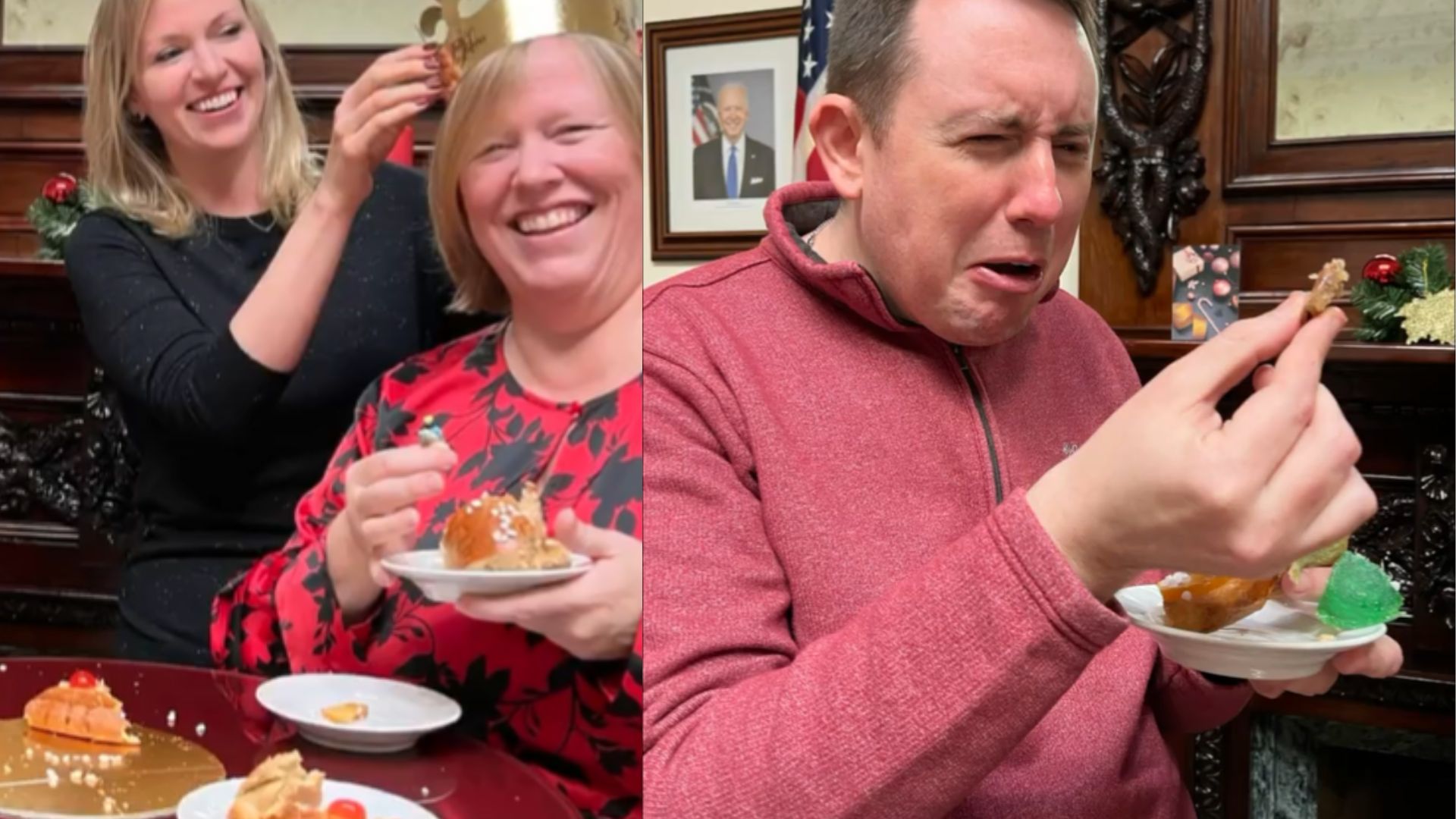In a gesture of festive fun and cultural connection, the diplomats of the United States Consulate in Barcelona have celebrated a much-loved Catalan tradition: that of eating a Tortell de Reis - a King's Cake - that as well as some delicious sweet pastry, also contains a fava or broad bean, and a tiny figurine of a rei - a king. The video, which quickly went viral on social media, shows how the head of the United States mission in Barcelona arrives with a tortell and encourages all of her team to take part in this deep-rooted Catalan tradition. And, as Catalan families know, as festive lunches comes to an end on January 6th, that's where the fun begins!
Who's got the bean and the king? The viral video of the day
The anticipation is palpable as the elegantly dressed diplomats cut the cake, and begin enjoying it, wondering whether their piece will contain just the delicious spongy filling or ...something else as well. The video captures the expressive moment when one of the diplomats realizes he has bitten on the bean, while another bursts into laughter when she finds her piece contains the royal figurine, thus earning the right to wear the cardboard crown that accompanies the tradition.
👑 A qui li haurà tocat la fava i a qui el rei? Els diplomàtics del consolat general 🇺🇸 s’han estrenat amb la tradició del Tortell de Reis!
— U.S. Consulate General Barcelona (@USConsulateBCN) January 5, 2024
💫 Esperem que Ses Magestats siguin generoses aquesta nit! pic.twitter.com/t9z0BaZim0
In addition, the video shows the amusing moment when the boss (here, la jefa) following the Catalan tradition, demands payment for the cake from the diplomat who found himself with the bean. A screen grab of the money transfer proves that the tradition was indeed followed to the letter! The video concludes with the diplomats sharing stories and laughter, a lovely reminder that despite cultural differences, there are universal moments of joy and community that unite us all.
This simple, but significant participation in a local tradition has been seen as a charming gesture by US diplomats, showing their interest and respect for Catalan culture. And it's not the first time that the US Consulate in Barcelona has shown its enthusiasm for adopting Catalan traditions. For example, in the past they have surprised locals with hilarious videos on the calçotada tradition of onion feasting or the scatalogical Caga, tió ritual - getting the log to take a dump!
Where does the fava-and-king tradition come from?
The history of the Tortell de Reis is not clearly documented, but it is suspected that it has its origins in the Roman festival of Saturnalia, in honour of Saturn, the god of agriculture in Roman mythology. Around the 2nd century CE, after the harvest season, it was common to celebrate with a tart-like dessert that included a broad bean. Whoever found the bean could expect to have a prosperous harvest the following year. Some sixteen centuries later, at the French court of Louis XV, the cook, following a royal order, added to the tortell, in addition to the fava, a gold coin.
In Catalonia, the well-known folklorist Joan Amades, in his book Costumari Català from 1952, explains a different reason for the presence of fava beans in the King's Cake. He recounts that as not everyone could attend the Adoration of the Magi, families designated a king by means of a bean hidden in the tortell. Whoever found it, represented the family in the religious act of the adoration, worshipping the baby Jesus in the name of all, thus becoming "king" for that day.

